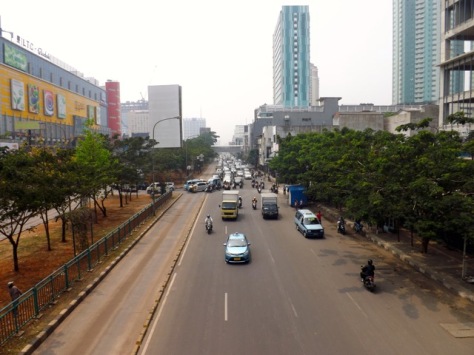Settled as a tin mining town in 1857, Kuala Lumpur didn’t officially become a city until 1972. Yet it’s the fastest growing metropolis in Malaysia, having exceeded 6.5 million people in just 150 years. Like many other rapidly growing cities, parts of it are construction zones with new buildings and public transport systems being developed.

While Kuala Lumpur only has a handful of tourist attractions, it’s still a popular destination because of its great food and plentiful shopping areas. It also has a growing arts and theatre scene and many museums, including a very popular Islamic Arts Museum.
Shopping
Kuala Lumpur’s ‘Golden Triangle’ area is centred around Bukit Bintang, veritably the Fifth Avenue of Malaysia with it’s massive TV screens and monorail.

The area is also known as KLCC, Kuala Lumpur City Centre, an area of sky scraping buildings and numerous shopping malls. Most of the buildings and malls in KLCC are connected on their underground levels by tunnels, some simply covered in advertising, while others have shops along their entire length. It’s easy to get lost in this underground tunnel network, as telling where one mall ends and the next begin can be difficult.

Towers
At the heart of KLCC is possibly the most popular central city tourist location, the Petronas Towers.

There are regular tours up the world’s tallest twin towers to the skybridge on level 41 (also one of the highest in the world) and then to the level 86 viewing area. The view out over the second tower with the KL tower and a rain storm in the background…

The nearby KL Tower appears to be taller than the Petronas towers only because it was built on a hill. Both offer great views by day and night.
Markets
There are two main market areas in Kuala Lumpur, Petaling Street and the Central Market.

While only two minutes from each other the two markets offer different market experiences. Petaling Street vendors tend to more aggressive, mostly insisting that you really want to buy a watch. The Central Market vendors tend to leave you alone unless asked for help.
Batu Caves
At the edge of the city are the most popular Hindu shrines outside of India. The shrines are in caves high in the wall of the limestone hill with 272 steps leading up to them. Dedicated to the Murugan, the Hindu god of war, the shines take some effort to reach, especially in Kuala Lumpur’s general humidity.

Another set of stairs leads from the main cavern to an open-topped cave where the main shrine is located.

A short distance from the Murugan Caves are the Ramayana Caves. These caves, dedicated to the Hindu god, Hanuman, depicts the Ramayana, an epic indian poem about the avatar Rama. There are many carvings in the cave, although it has yet to be completed.

Of course, a general favourite of the caves area are the monkeys.

Overall, Kuala Lumpur is a capital city, a great place to hang out for a few days without the need to visit as many tourists spots as possible. We enjoyed the great food, the nightlife and playing Cards Against Humanity with fellow travellers in the hostel. While little is spoken of it in the travel guides, Kuala Lumpur also home to the grande chicken temple of Nandos. A must visit to all chicken lovers.

Next, we head north to the small city of Ipoh.
The Trail Wanderers








































































